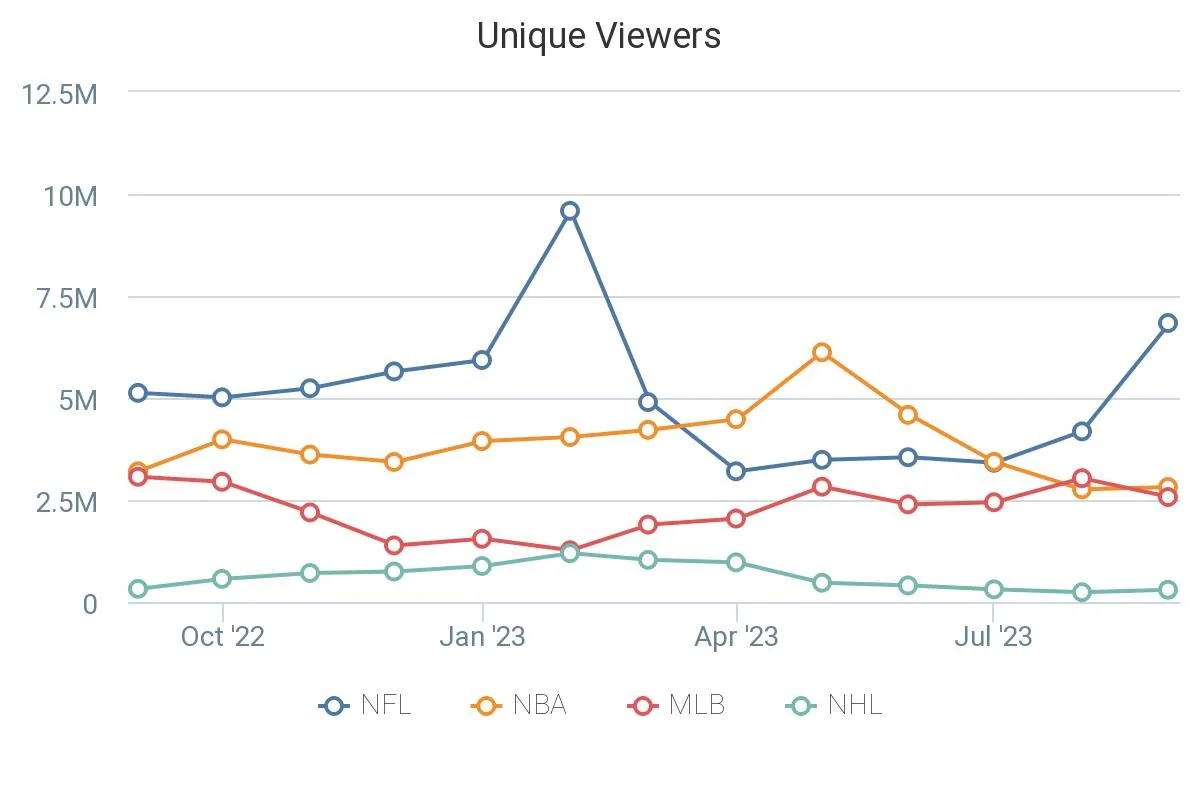NBA In-Season Tournament Tries Something New While Sports Look For Answers
The NBA’s forthcoming in-season tournament is not a wholly new idea. League commissioner Adam Silver has admitted he grew interested in the idea from European soccer/football, and technically, U.S. college basketball has been running in-season tournaments forever. Though those events — like the Battle 4 Atlantis, NIT Season Tip-Off, Maui Invitational, etc. — have not been used as new sources of TV revenue.
That is the impetus behind the NBA’s in-season tournament, after all. By adding stakes to early-season games that may otherwise be ignored by all but the most hardcore hoops fans, the NBA is making its product more valuable at a critical time when it’s negotiating a new TV deal with numerous partners.
As a result, the NBA’s media rights negotiations are likely to look much different than what we’ve seen before. Taking cues from the NFL, the NBA wants to slice up rights in as many interesting ways as possible to help maximize revenues. Amazon’s already interested in playing ball there, with dedicated days of the week for a package. And with existing partners Disney (ABC/ESPN) and Warner Bros. Discovery (TNT) looking for ways to cut costs, various packages could best serve everyone involved — while also boosting what the NBA makes on this round of TV rights deals.
Having showcase days/nights across a variety of partners will deliver the most media revenues, but there’s a balance there the NBA’s eager to find. Silver recently remarked that cord-cutting has made it hard for younger audiences to find games, so streaming will be a key aspect of future rights. But the other side of that is not slicing things too many ways, making it impossible for fans to locate games between cable, remaining regional sports networks, streaming partners and local broadcast.
This year’s in-season tournament will be the trial run, with numerous games across ESPN and TNT (and a championship on ESPN). However, where things get tricky is around the games NOT on national TV — of which, there are many.
Those games appear across local broadcast and RSNs, so essentially become in-market contests or fodder for the biggest NBA League Pass diehards. That tiered setup could be poised to create confusion around which games are in-season tournament contests and which aren’t. Concerns like that could also be temporary if the NBA opts to give the whole slate of games a bigger spotlight on one network or service, turning the entire in-season event into a national package.
Such a move would be ideal for the NBA, which nets more eyeballs and revenue from such an arrangement, but group play contests between lowlier teams like the Hornets and Wizards could also yield middling returns for media partners. Granted, if the event gets more important over time, every game starts mattering more to fans. But even with the prospect of advancing to the knockout round on the line, it still takes extra effort to package regional matchups between last-place teams as a national TV spectacle.
It’s not impossible, though, which is where the intrigue comes in from other leagues. As networks, streamers and other U.S. sports leagues look for ways to grow attention from audiences and advertisers, the in-season “experiment” will be extremely informative. And its success could spawn quick copycats, to maximize the value of regular season inventory.
Major League Baseball could use this sort of format to help mitigate its own precarious media spot, and potentially get out ahead of national TV downsizing around its product. The NFL doesn’t really need this format given its week-to-week popularity, but men’s and women’s college basketball could experiment with it, as could college football to a point. The NHL claims it’s not considering the idea, but that could change the second the in-season tournament finds traction — on the same network partners, ESPN and TNT, no less.
Even without the exact same tournament setup, the NHL would do well to start parsing out portions of its media rights the same way the NFL and MLB already do, and the NBA is poised to do in the next deal. College properties may have to do the same to keep up with the Big Ten, which already has its games divvied up for maximum revenue.
At a time when TV viewers are getting older and younger audiences are harder to reach, creative approaches like the in-season tournament become one of the last remaining cards for leagues to play — especially in light of how staggeringly high live sports rights fees are at this point.
(via Tubular)
The chart above, from Tubular Labs, shows a monthly look at unique U.S. viewers aged 13-to-24 for the four major leagues across Facebook and YouTube. Even at their peak, those numbers are not very high (for instance, fewer than 10 million unique people watched the NFL in February, its best month).
An inability to attract a large number of young viewers on those platforms is not indicative of league-specific failures, as much as a struggle for sports to find solid footing with young audiences. For reference, the figures above account for less than 20% of each league’s monthly unique viewers in many cases. Of course there are other platforms — TikTok, Instagram — that can skew younger, and leagues are making efforts there, too. But the fact that the most likely digital viewers are also the most likely TV viewers shows that there’s a looming, significant issue for sports.
Does the in-season tournament solve it all? Of course not. What else can the NBA and other leagues do, though? When you’re facing a widespread battle for attention and a younger audience less willing to engage than previous ones, I’d argue it’s better to try new things instead of repeating what you’ve done, and then wondering why you can’t reach them.


